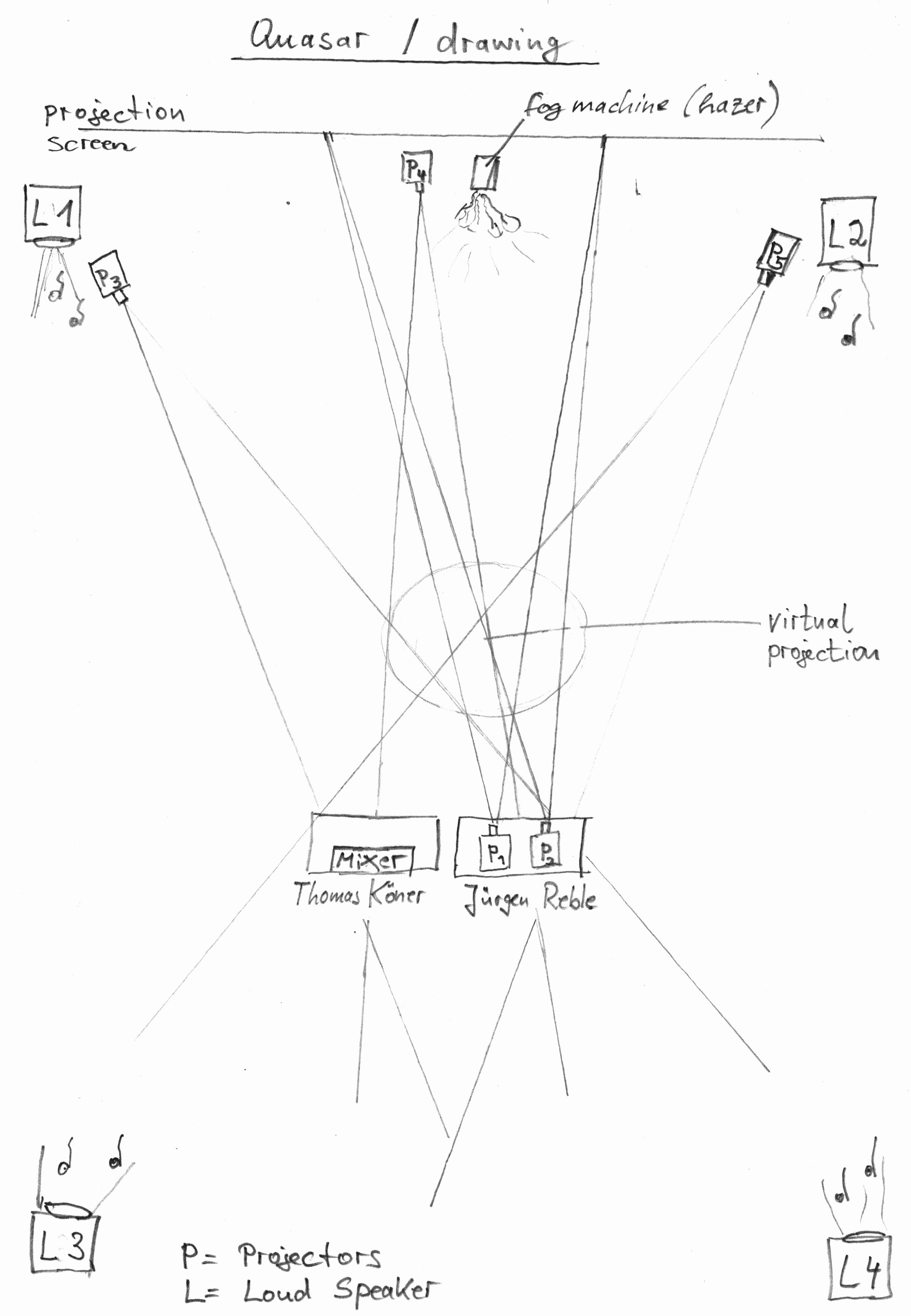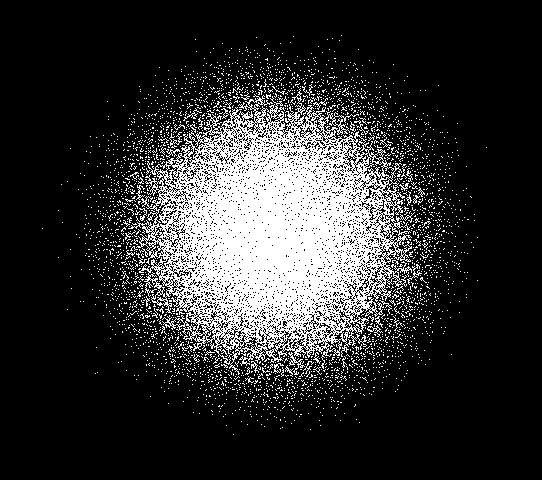
Synopsis
Quasar immerses the audience in an incredible, dreamlike world which explores the borders of perception, the world between sleep and wakefulness.Celebrated film artist Jürgen Reble's hand-processed and chemically decayed 16mm film unfolds a pulsating halfworld of abstract movements, his surround projectors illuminating a haze of fog until a microcosmos of circulating galaxies appears like an ephemeral vision of molecular particles.In perfect synchrony, widely acclaimed sound artist Thomas Köner's remarkable quadrophonic soundscape uses contact microphones to scan the sound of the projectors and the hazer, transforming it with live-electronic treatments and creating a process which unfolds a musical space. With a musical perspective which constantly shifts the sound coordinates of the performance, movements in the irridescent space of close and far-away timbres decay into a deep, circulating silence. An arresting, mesmerizing experience, Quasar stands apart as a vision of significant depth and elegiac beauty. (Norwich, International Animation Festival 2006, catalogue text)
Live Recording Norwich 2006, 0:52 min.:
Film Performance with 5 modified 16mm projectors and Hazer
Film Performance: Jürgen Reble
Audio Performance: Thomas Köner
Premiere: Rotterdam IFF 2005
Estimated Length: 45 minutes
Quasar won the "Best Off Screen Award" for the strongest international installation at the 20th Images Festival in Toronto, April 5-14 2007
Drawing of the setup: Jürgen Reble:

History of Events:
2005.02.03 - Rotterdam International Film Festival
2005.09.29 - Brussels
Palais des Beaux Arts
2006.04.05 - Leeds, City Art Gallery, Evolution
2006.10.19 - Norwich International Animation Festival
2006.12.06 - Berlin, Hamburger Bahnhof
2007.04.13 - Toronto Music Gallery
2007.07.05 - Amsterdam Paradiso
2008.09.20 - Paris Aux Vôutes, LightCone Preview
2010.10.19 -
Gent, OFFoff art cinema, Witte Zaal
Review
Eye Weekly, Toronto
April 12, 2007 - Volume 16, Issue 28Arts Week
Analogue spaceship
Quasars are mysterious celestial objects, perhaps galaxies in embryo, that are very far away, and very bright: their massive concentrations of energy are detectable on Earth as radio waves, and as faint points of light through certain telescopes. German artists Thomas Köner and Jürgen Reble's QUASAR performance – which has previously taken place at the Rotterdam Film Festival, and comes to Toronto this week as part of the Images Festival's “Live Images” program – is a loose, appropriately fleeting simulation of this enigma. Using five 16mm projectors strung with hand-processed and chemically decayed film, Reble creates a symphony of flickering light while Koner, with the aid of contact microphones fed into a quadraphonic sound system, picks up the sonic pulse of these flickers.
“We are both interested in giving our work a sculptural quality,” says Reble in a recent email interview. “But we never have rehearsals of our performances. We define the set-up and then bring together our materials. So the images are not made for the sound, or vice versa. Our intention is to bring together the materials only through live performance, and then weave them into an ephemeral composition of sound and light.”
Such ephemerality, particularly that of media – the light-sensitive, and thus constantly changing, condition of film, for instance – is essential to Koner's and Reble's non-performance works as well. A current show of Reble's photographs and Koner's videos at the Goethe-Institut is a play-by-play of various states of indeterminacy. Reble's photographs consist of Brakhage-esque experiments in which once-recognizable frames of celluloid have been reduced to saturated abstractions. (A retrospective of Reble's like-minded films will screen at the Institut this Sunday.)
Like these works, QUASAR's indeterminacy depends on older ways of gathering and manipulating images. Reble's employment of retooled 16mm projectors demonstrates the capacity of analogue equipment to act like a painter's brush; its very fallibility yields surprising, ambiguous results. Reble doesn't reject digital technology outright (he uses it to edit his films), but agrees that QUASAR would not be the same with it.
“It would be less improvised, and more static,” he says. “Decisions about the speed of the video would have to be made before the event. I don't see a conflict between the different technologies. For me personally, though, the computer as an image-generator is not especially interesting. And I do think that the analogue is finally falling into our visual cortexes again.”
Perhaps QUASAR's devotion to the analogue – and to the handmade – also enhances its intimacy; after all, it's the closest anyone's liable to get to the real thing. “Ideally, I would compare [QUASAR] to entering a spaceship and, for the duration of the piece, diving into the centre of an actual quasar,” says Reble. “I never thought about making it spectacular, or entertaining, but [this piece] fascinates and affects me, even if it consists only of pink noise and dancing dots in a nebula. Thomas and I invite the audience to share that with us.”
DAVID BALZER
